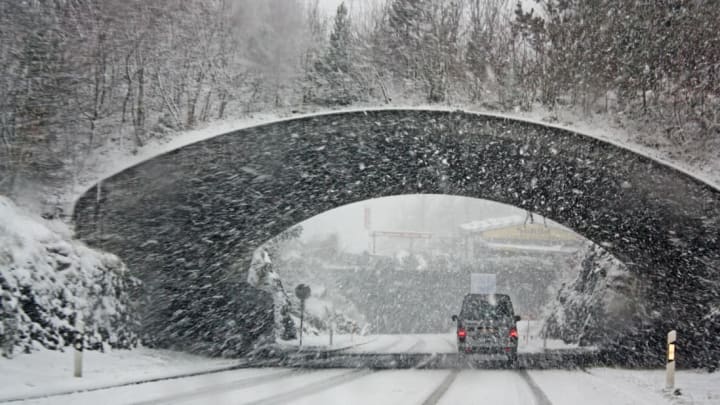The northeast was besieged this week, with snow accumulation in excess of three feet in some areas. Hefting shovelfuls of snow gives a person time to think, and as residents dug their way out of this white apocalypse, they might have wondered what, exactly, they were battling. Was it a snowstorm, or a blizzard? What’s the difference between the two?
A snowstorm is your garden variety winter weather event. It can involve snow, sleet, ice, or freezing rain and be accompanied by freezing temperatures. Snowstorms can result in hazardous surfaces and poor driving conditions, so they’re nothing to trifle with.
A blizzard, on the other hand, brings real environmental violence. To meet the standard of a blizzard, conditions need to involve three weather events: Winds are sustained at 35 miles per hour or more; snow reduces visibility to a quarter-mile or less; and the conditions must be expected to last for at least three hours.
One is not necessarily more severe than the other. A blizzard could create poor visibility and strong winds for a few hours but not leave much accumulation. In fact, a blizzard may not even involve active snowfall if existing snow is being blown by wind. (Blizzards are less common in coastal regions because snow tends to be heavier and less prone to being moved around.) But on the whole, blizzards tend to be more threatening, as conditions can grow so bad that visibility is near zero and wind chill factors invite frostbite or hypothermia.
The storm endured this week was classified as a nor’easter, which is an event identified by a low-pressure system originating in the Mid-Atlantic coast and gaining strength as it moves.
As impressive as this recent storm may be, there have been worse. In the notorious Great Blizzard of 1888, the northeast was hammered by as much as 55 inches of snow and winds up to 85 miles per hour. Above-ground water and gas lines froze, and walking was all but impossible. Of the 1000 people due in for work at the New York Stock Exchange, only 30 made it in.
Have you got a Big Question you'd like us to answer? If so, let us know by emailing us at bigquestions@mentalfloss.com.
